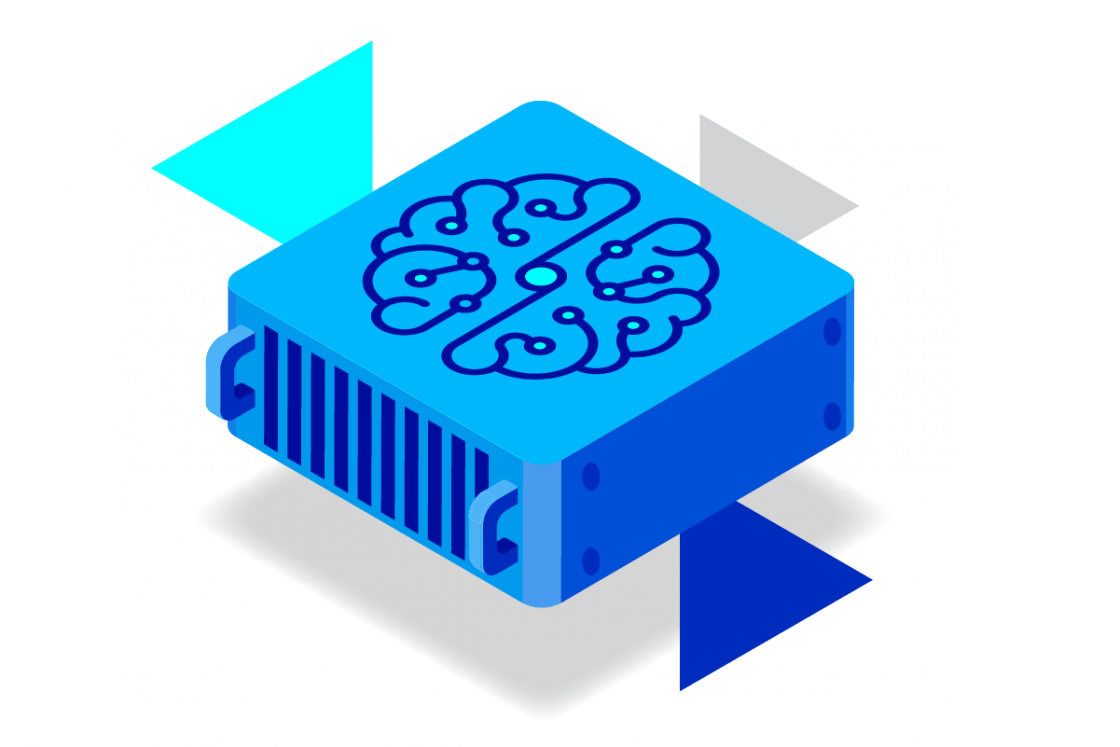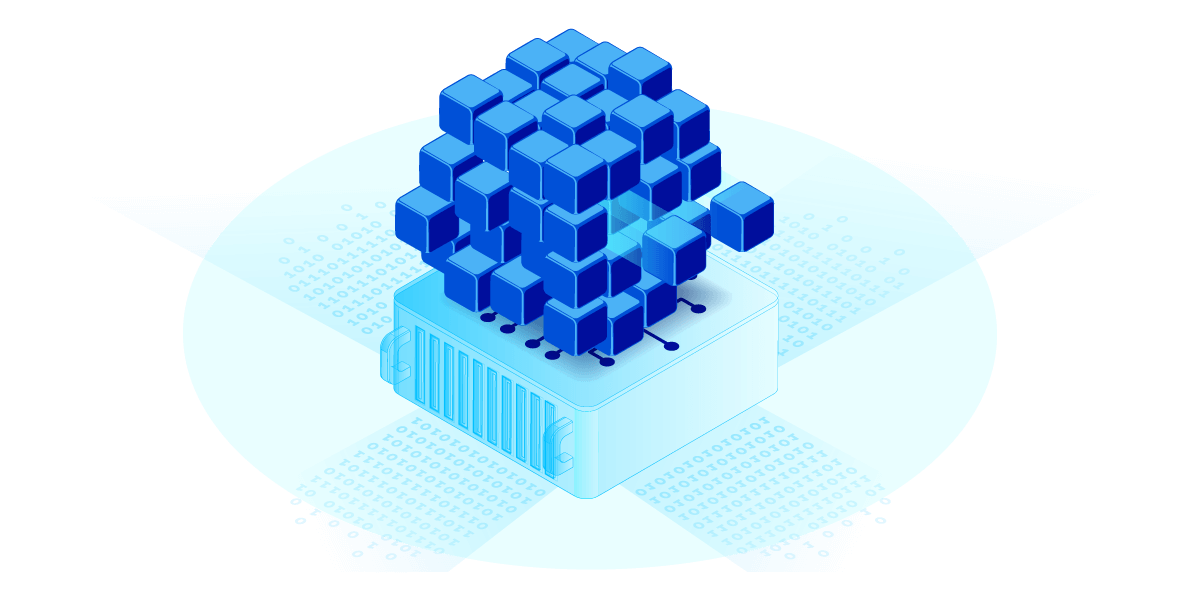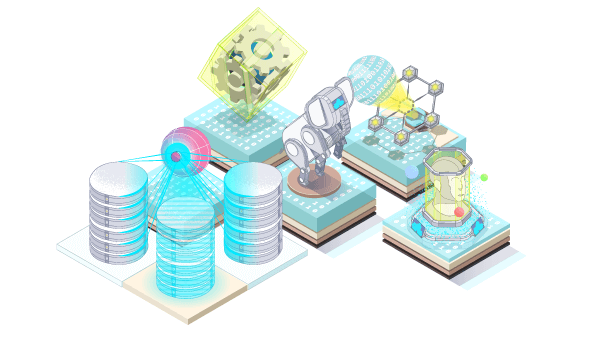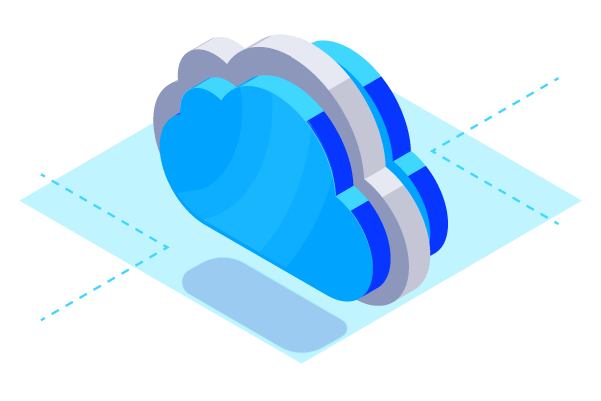Deep learning vs Machine learning

Algorithms improve themselves by learning from data, the initial algorithm design, choice of model, and architecture are typically determined and supervised by human engineers. Computers then “learn” to make predictions and/or decisions by recognizing patterns of statistical repetition. Thought to be a relatively new field, machine learning has actually been around for decades and was born from the need for artificial intelligence. The term was originally coined in 1959 by Arthur Samuel, a pioneer of artificial intelligence research and employed by IBM. Samuel developed a computer program for playing checkers which included a scoring function for the positions of pieces on a game board. The scoring function used machine learning to measure the chances of either side winning.
How Does Machine Learning Work?
Machine learning relies primarily on the data mining feature (i.e., the extraction of information from large volumes of data) for pattern recognition. These patterns are then used to further refine the analysis and algorithms. Of course, the quality of the input data determines how accurate the model will be. Incorrect or outdated data will result in inaccurate predictions. Training the machine is the most important step in machine learning. The cleaned data is divided into two sets - a training set and a testing set. The training set is fed to the machine learning model and supervised, allowing it to find patterns and make predictions. These predictions are then compared to the testing set to check the accuracy of the model. Over time, with the proper training, the model gets better at predicting and can function on its own with minimal human intervention.

How Does Deep Learning Work?
Deep learning is a subset of machine learning that involves a more sophisticated approach to algorithm modeling. As previously mentioned, machine learning works by extracting information from large volumes of input data and recognizing patterns without being explicitly programmed to do so. However, these computers still think and act like machines (i.e., in a more linear manner), and their ability to learn and perform more complex tasks still falls far short of what the human brain is capable of.
Deep learning models, on the other hand, involve a more sophisticated algorithm approach to machine learning and are specifically modeled after the human brain. Complex and multi-layer neural networks (sometimes involving thousands of layers) are constructed to allow data to be passed between nodes in highly connected ways, similar to how neurons operate in the human brain. Neural networks are also referred to as artificial neural networks (ANNs) or simulated neural networks (SNNs). This approach requires extremely large volumes of correctly configured data, but it can begin to generate immediate results, and there is relatively little need for human intervention once the data infrastructure is put into place.
Machine Learning vs Deep Learning
Several significant differences exist between a machine learning and a deep learning program. First, machine learning requires more human input to achieve results, whereas deep learning takes more time to set up but can generate results instantaneously and requires minimal human intervention once up and running.
A machine learning program uses algorithms that are less complex than those used in a deep learning program. They can run on traditional computer configurations and train a network to detect certain data. Deep learning systems, on the other hand, require investments in more complex configurations that include graphical processing units (GPUs) that feature greater bandwidth memory along with the ability to run multiple operations efficiently at the same time.
Machine learning requires more structured data and often uses simple algorithms like linear regression, a data analysis technique that predicts the value of unknown data by using another related and known data value. Deep learning, on the other hand, employs neural networks and can run off large volumes of unstructured data.
In machine learning models, each layer in the neural network contributes to the hierarchical representation of data, enabling a system to make informed predictions or decisions without an explicit program for every scenario. Machine learning has been around for decades and is one of the applications commonly used by your bank and your doctor's clinic. Deep learning. relies on neural networks to model and comprehend complex patterns, enabling network systems to make intricate decisions based on extensive data analysis. This technology enables complex and autonomous tasks like natural language processing and robots that learn how to perform advanced surgical procedures.
Real World Examples of Machine Learning
There are many common uses for machine learning in our day-to-day lives.
Image recognition
Image recognition involves the science of using a computer program to extract information that can be used to reverse-engineer the image. This can help identify a person from a photograph, which is a common feature in identity theft.
Speech recognition
An amazing example of modern science is the trained use of machine learning through speech recognition. Streamlining user interactions with technology speech recognition can enable hands-free control of devices, transcribe spoken words into text for documents, and facilitate voice commands for virtual assistants.
Fraud detection
Another application of machine learning is that of fraud detection. Criminals committing credit card fraud, for example, continually evolve their tactics, making traditional detection methods obsolete over time. Machine learning can help overcome this problem. Each time a customer completes a credit card transaction, the machine learning program carefully examines their profile and previous transactions in the network to search for any unusual patterns to detect fraud. Using stream processing and real-time data access, credit card companies can detect and prevent fraud as machines learn more about customer habits. The use of stream processing, for example, involves analyzing data as it flows through system layers, and real-time access enables the proactive identification of fraudulent activities, allowing for an immediate response and saving consumers and credit card companies time and effort in addition to billions of dollars.
Traffic Prediction
Machine learning is also used for traffic prediction. These days, the use of GPS in our everyday lives has become a matter of routine. We use GPS in our cars, for example, to help us find a restaurant, navigate a new city or negotiate traffic to arrive at our destinations on time. Navigating tools like Google Maps show you the time necessary for your trip, calculate your estimated time of arrival and create the most efficient routes based on road conditions and predicted traffic. They can also give you an image of your destination, enhancing your recognition of the surroundings. Additionally, logistics-related businesses and shipping companies rely heavily on traffic prediction to save both time and money. Several types of machine learning algorithms are trained for traffic prediction, including regression and time-series analysis. Considering how much time we spend in our cars traveling from destination to destination, the time savings gained through the science of traffic prediction are of great value.
Real World Examples of Deep Learning
Deep learning also surrounds us and is becoming one of the key features of modern life.
Natural Language Processing
Natural language processing (NLP) is an area of study that focuses on the interaction between human language and computers. Humans receive constant language training from birth along with exposure to a vast array of social settings to develop appropriate responses and personal forms of expression. Natural language processing through deep learning aims to achieve the same results by training machines to understand linguistic nuances to formulate appropriate communications. One of the key applications of deep learning in NLP is that of machine translation.
Deep learning models are trained on large datasets of human language to translate text from one language to another. This technology has a wide range of applications, especially for international organizations, and includes the Translation of marketing communications and websites as well as internal corporate communications. Translators no longer need to network to find the right terms for a word. Machines have been trained to learn a wide vocabulary for them and the resulting computer programs can increase their work output immensely.
One important feature of deep learning in NLP is sentiment analysis. This highly developed science involves using algorithms to analyze layers of text to quantify attitudes, opinions, and emotions on the part of consumers. Deep learning models can be used to accurately classify a layer of text as positive, neutral, or negative, allowing businesses to gain valuable insights into customer sentiment regarding their products and/or services. This, in turn, can help them make more informed decisions, thus improving customer satisfaction and customer relations. Though still sometimes a challenge in comparison to human abilities, deep learning has opened up an entire new world of possibilities based on natural language processing, enabling us to understand and interact with human language in ways never before seen.
Medicine
Deep learning also features strongly in the field of medicine. Surgeons, for example, are using DL applications to identify clinical diagnoses, support decision-making, improve surgical training, interpret medical images and navigate preoperative planning and intra-operative procedures, enabling them to improve patient safety and outcomes. There is no lack of optimism regarding the potential improvements in patient care, but it can also be difficult to explain how a deep learning algorithm arrives at a particular conclusion, and this sometimes prompts a certain amount of skepticism on the part of patients. Education is often successful in addressing the questions on machine output versus human output, in addition to the ongoing communication of success stories.
Regarding the application of deep learning to the field of surgery, physicians typically spend decades mastering and fine-tuning their skills, participating in hundreds of supervised procedures to perfect various methods and learn the best techniques.
Unfortunately, they're often hindered by human limitations, including memory, the time it takes to input data, and the reality of a limited number of hours in a day. A deep learning program, on the other hand, can process a sea of network information in just seconds. Surgical robotics with superhuman precision can then be programmed using this information. Unconstrained by time or memory, deep learning systems can sift through a vast layer of data and process recordings and images of thousands of surgeries in seconds. They can also remember the first procedure they observe as well as the last and use that information in the fine-tuning of their methods. Furthermore, using deep learning algorithms to streamline patient care and automate surgical procedures builds efficiencies, thus helping to ensure that more people have access to healthcare and life-saving surgical procedures.
The Future of Machine Learning
Machine learning is a subset of artificial intelligence that has been around since the 1950s and features widely in our everyday lives. Surely, machine learning will continue to open up unlimited applications for industries and individuals alike, improving lives by saving time and money, improving access to healthcare and improving outcomes, just to name a few. Who can predict what the future holds? What once seemed like science fiction, with images of robots that learn how to do our daily tasks has become reality. Though concerns exist regarding human beings being replaced by machines, the truth is that human knowledge will always be needed. Artificial intelligence plays a complementary role; not a substitutive one. The sky’s the limit as far as the opportunities machine learning affords us, but one thing is for sure: the revolution is here to stay!

AI Deploy
If you’ve reached the end of an AI project cycle, putting your machine learning models or applications into production, you know that this resource-intensive stage of industrialisation can be a real challenge.

AI Training
Launch your AI training tasks in the cloud, without having to worry about how the infrastructure works. AI Training enables data scientists to focus on their core business, without having to worry about orchestrating computing resources.

Data Analytics
In addition to our range of storage and machine learning solutions, OVHcloud offers a portfolio of data analytics services to effortlessly analyse your data. From data ingestion to usage, we have built clear solutions that help you control your costs and get started quickly.

OVHcloud cloud storage
There are sometimes constraints that will depend on the type of data you need to store and what it is used for — so an adapted solution is required.